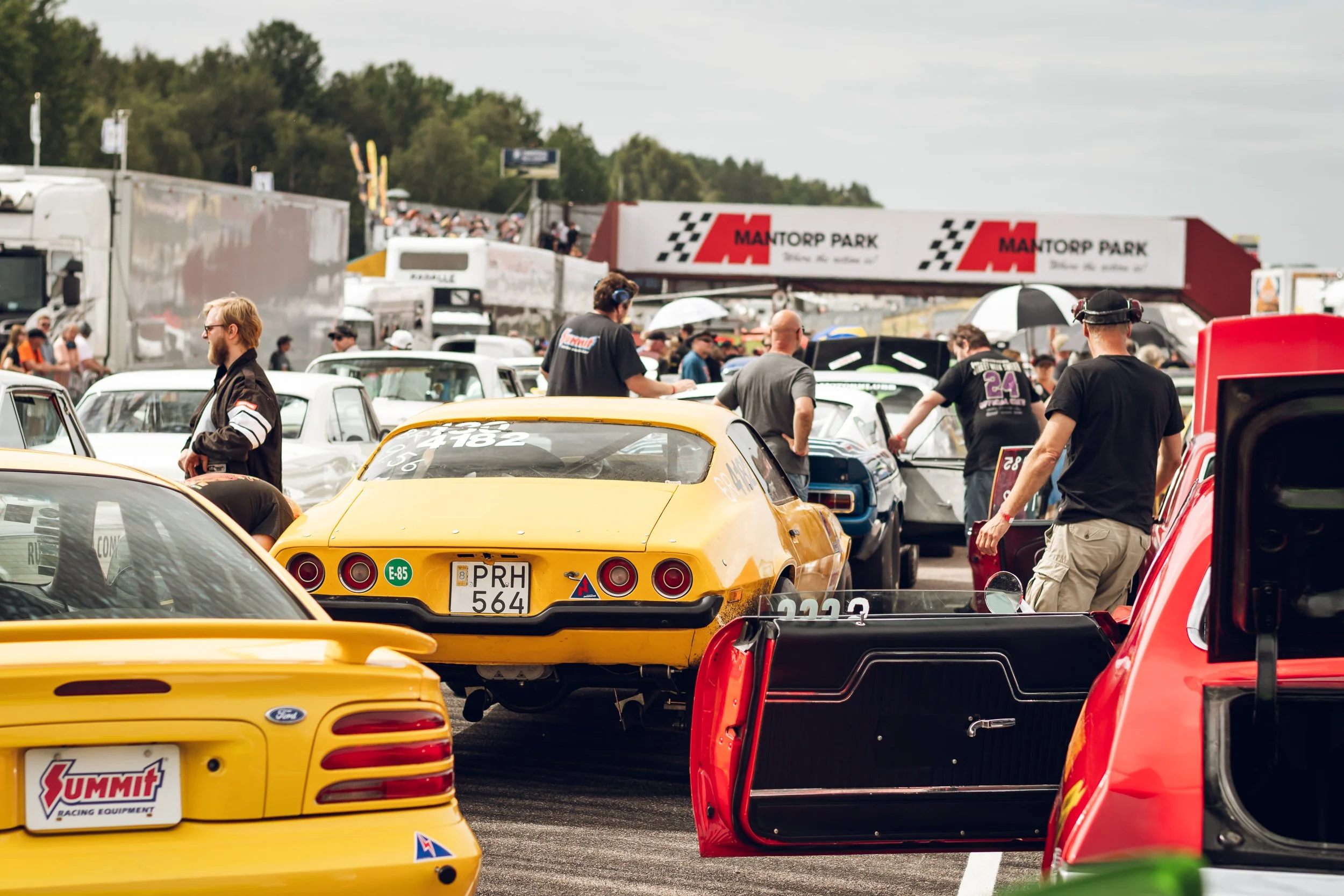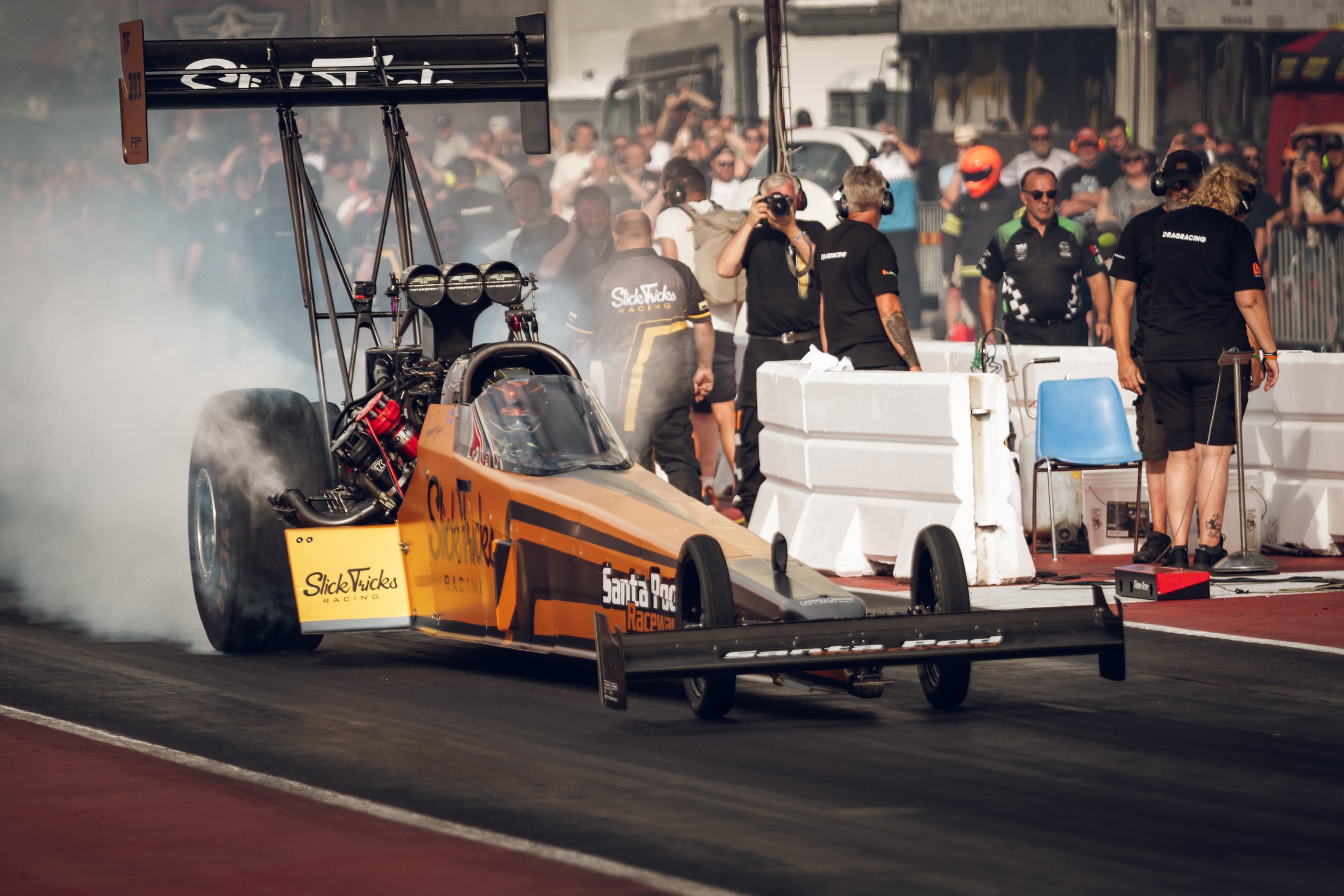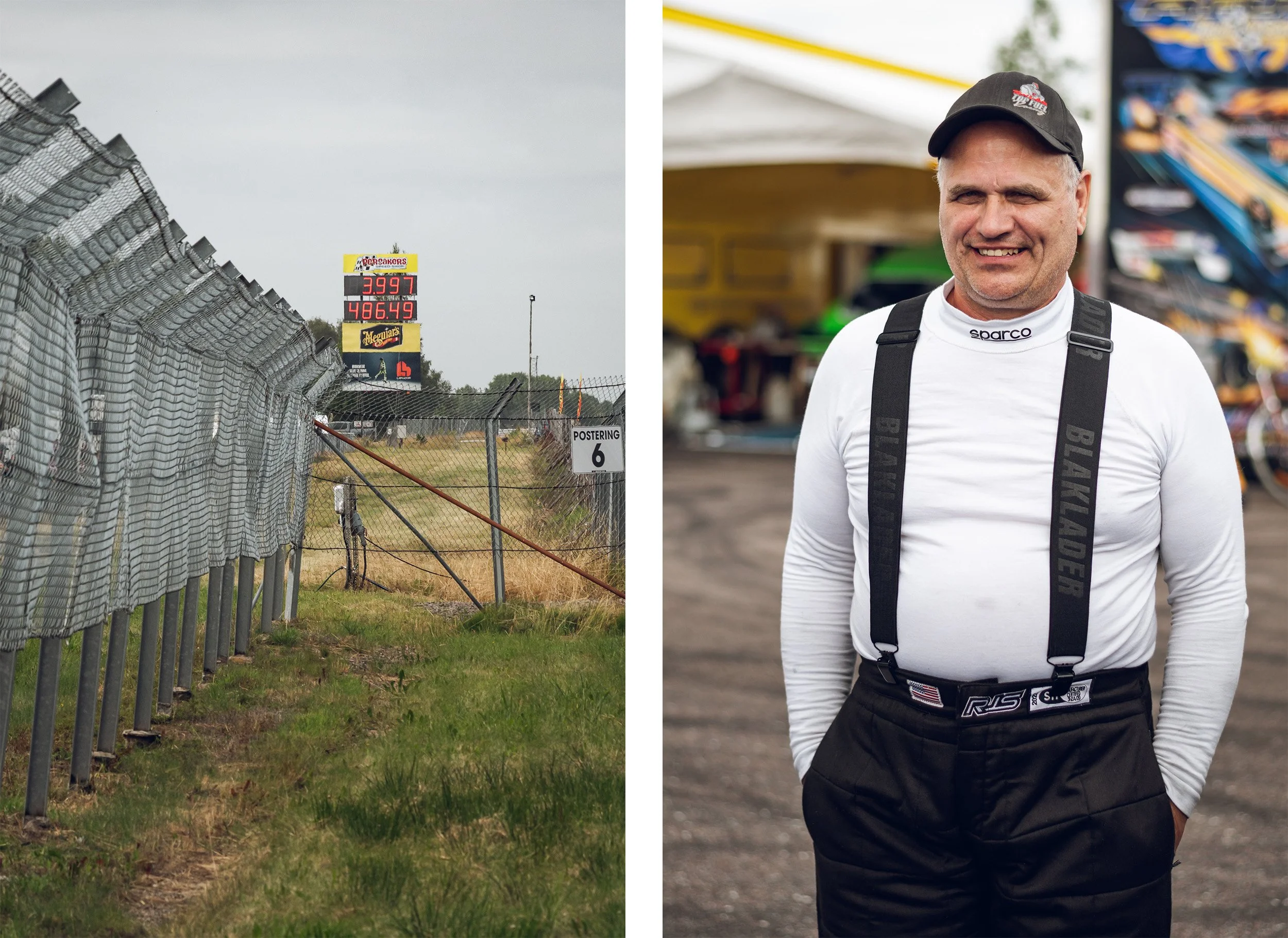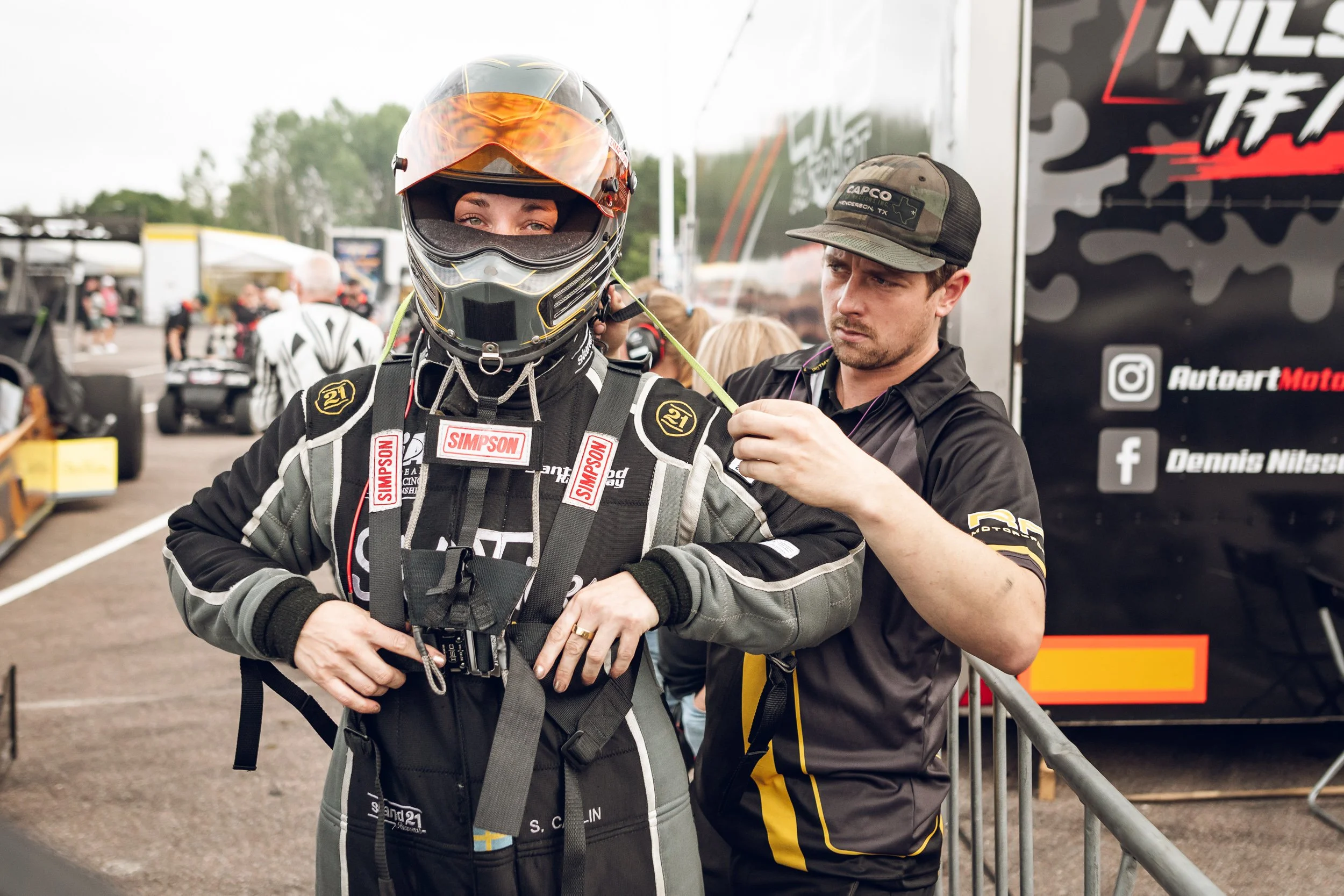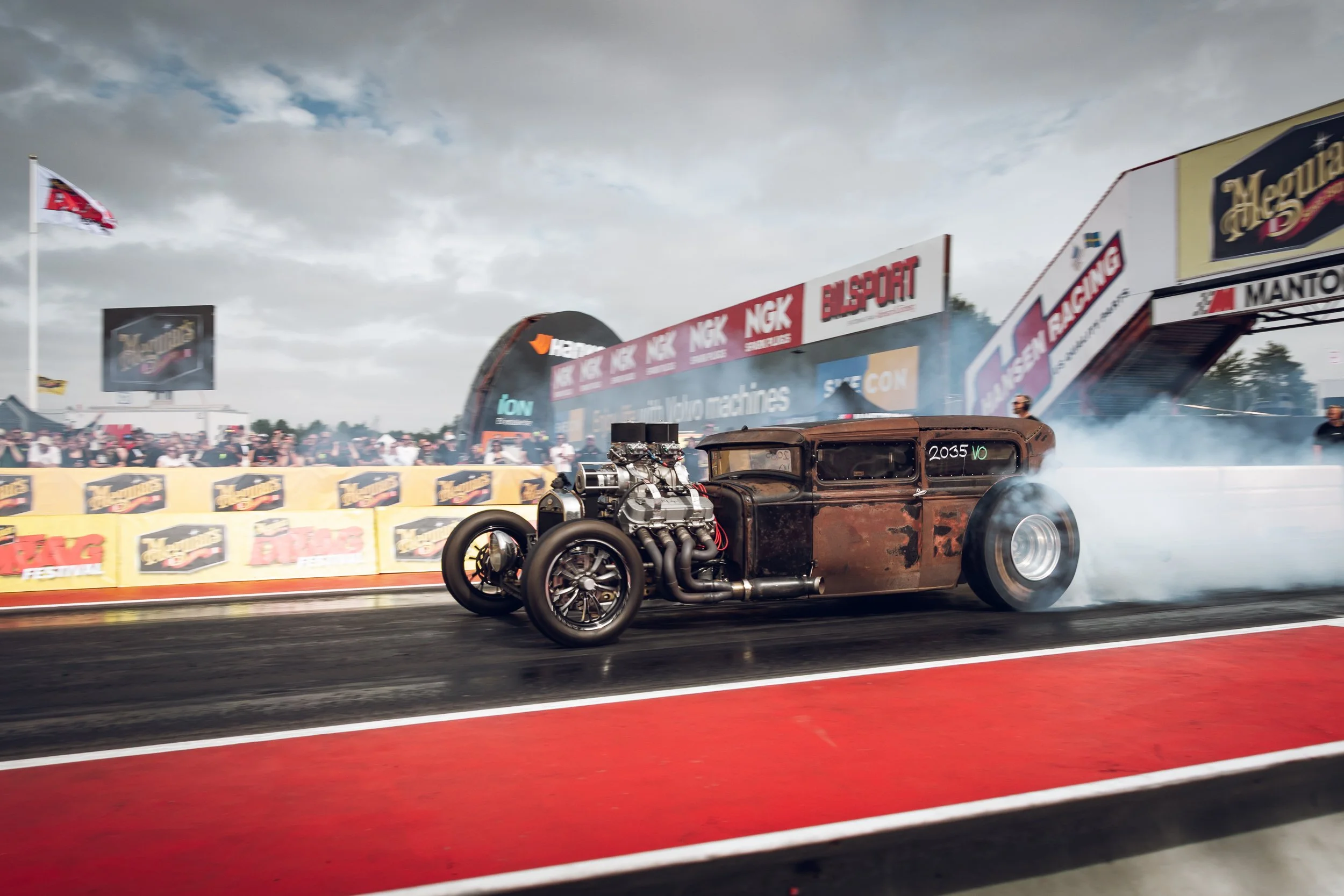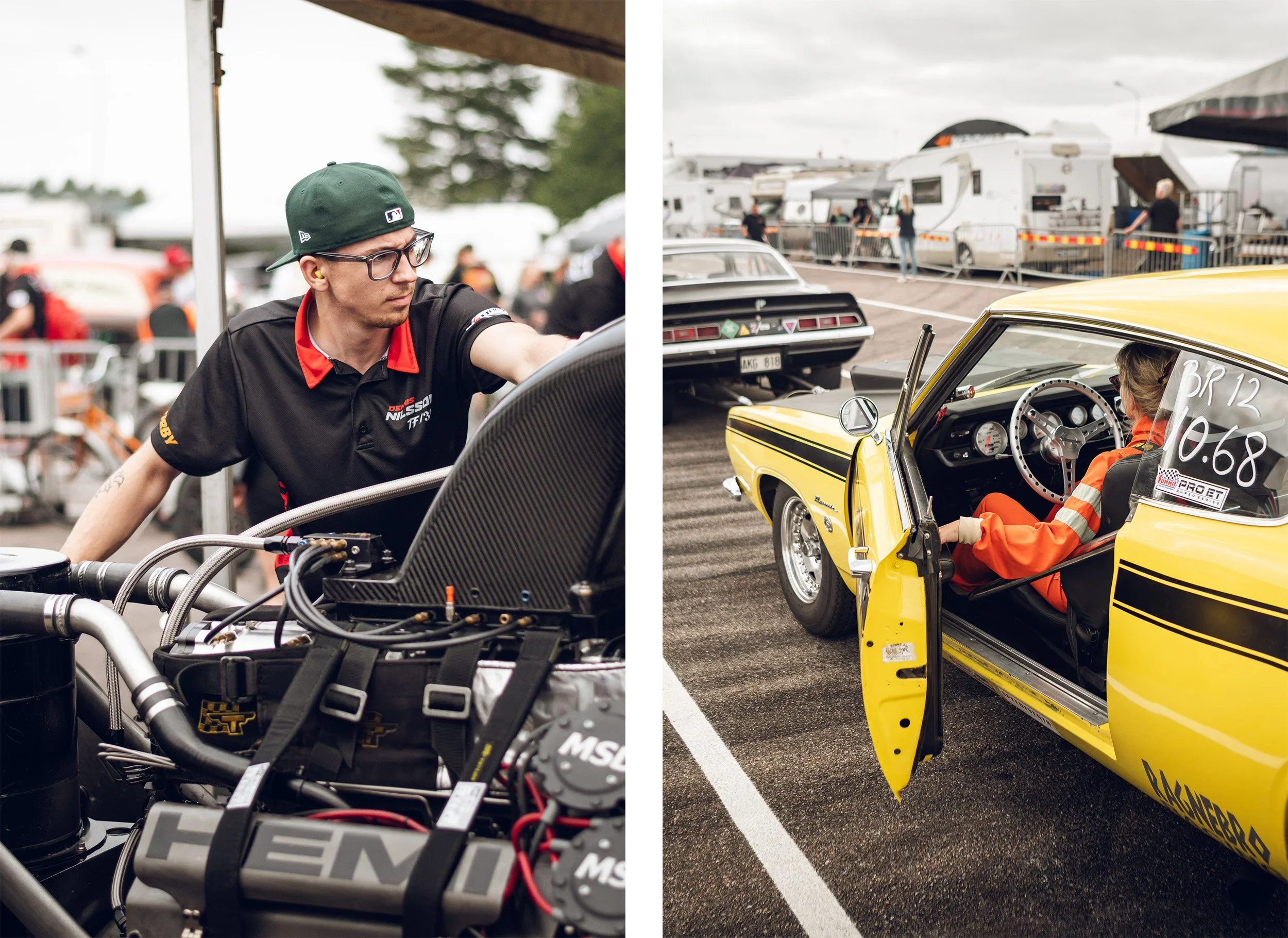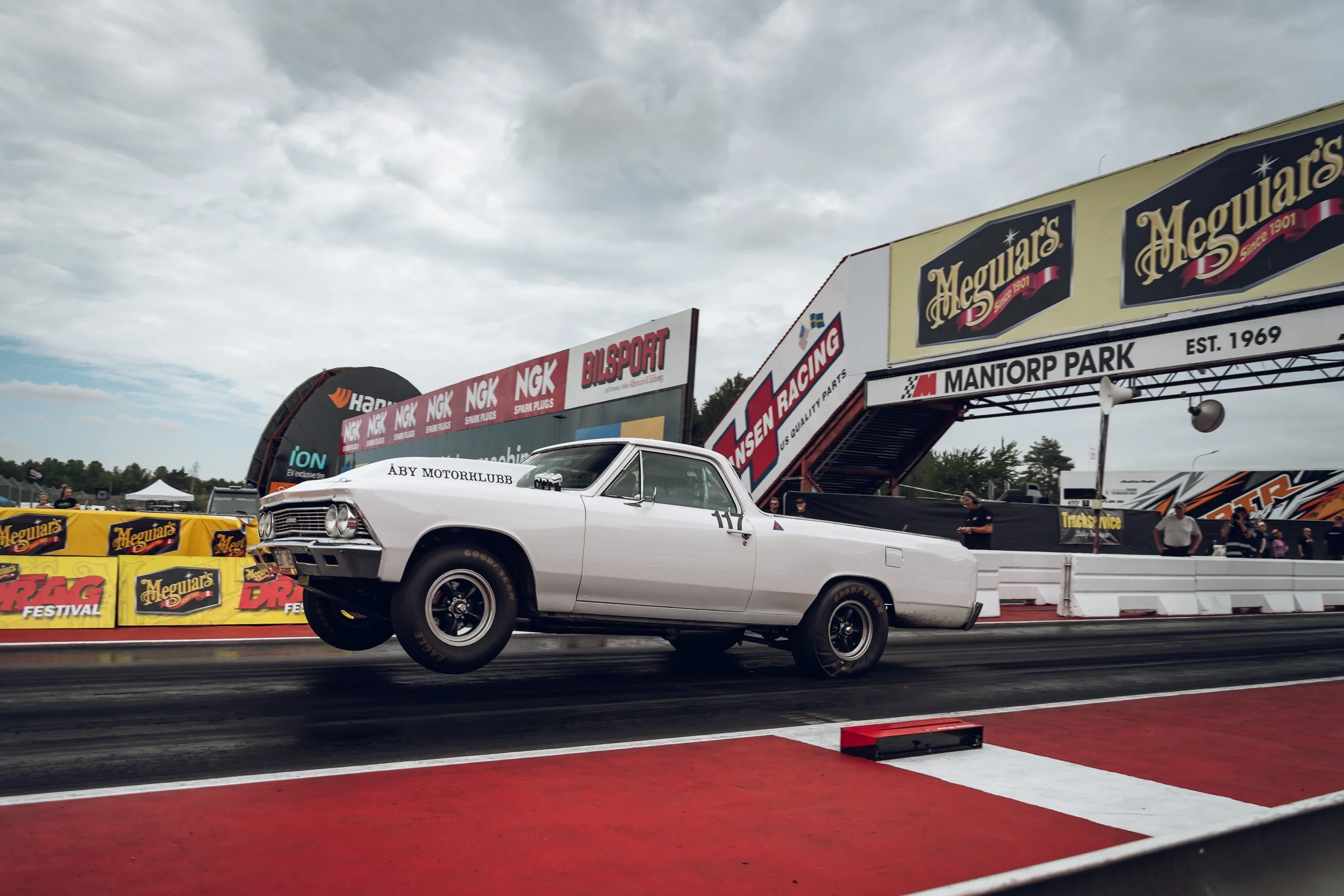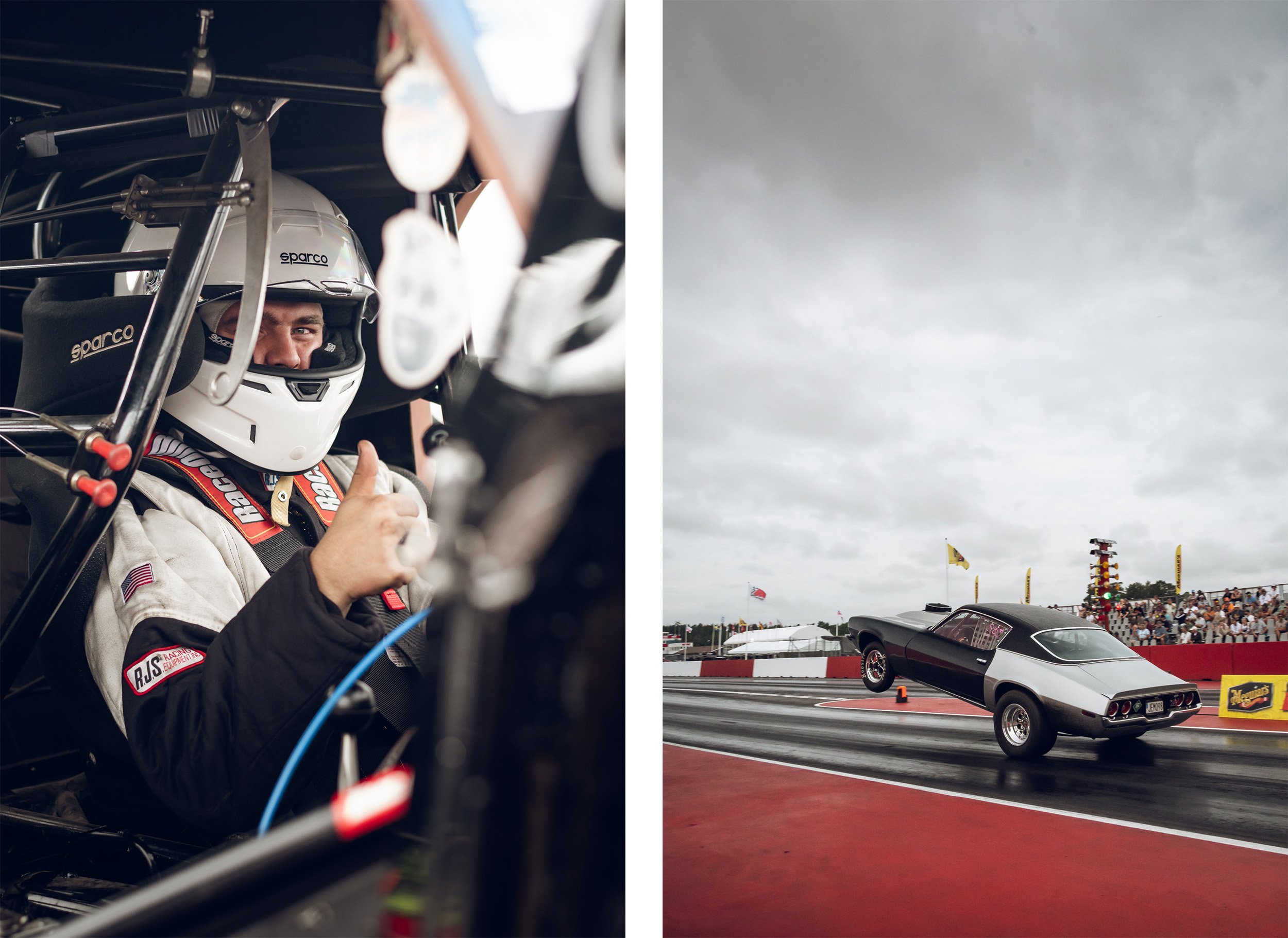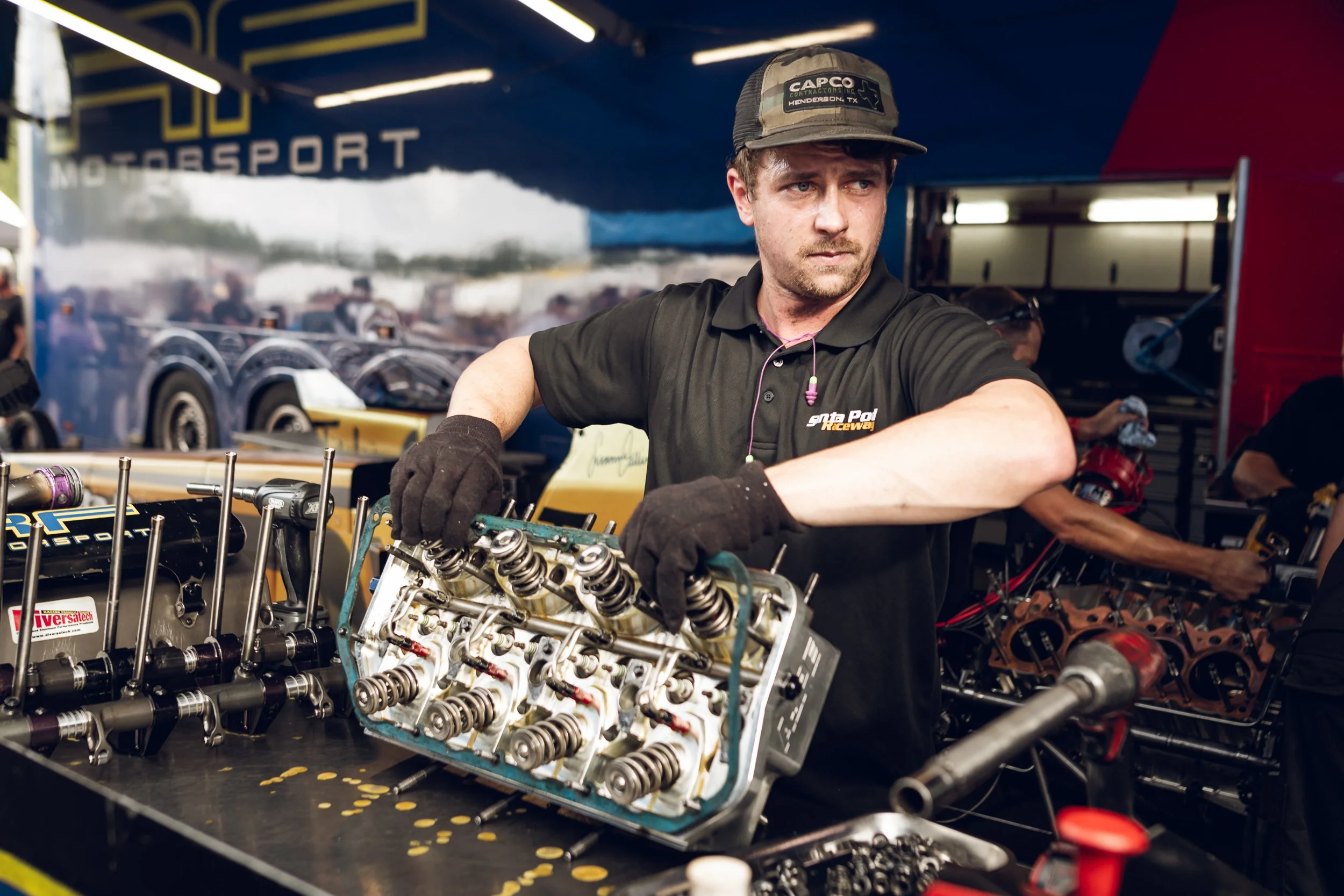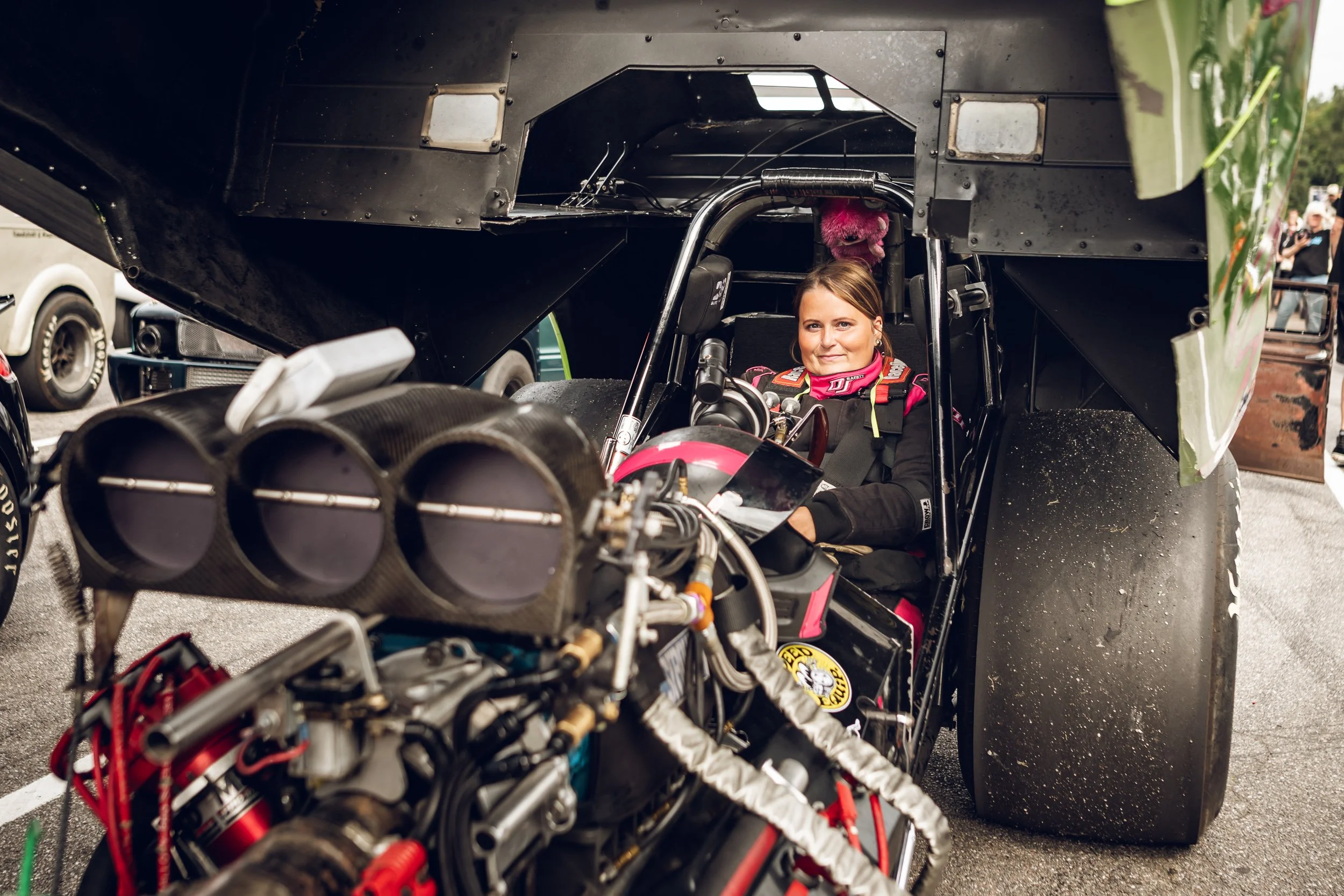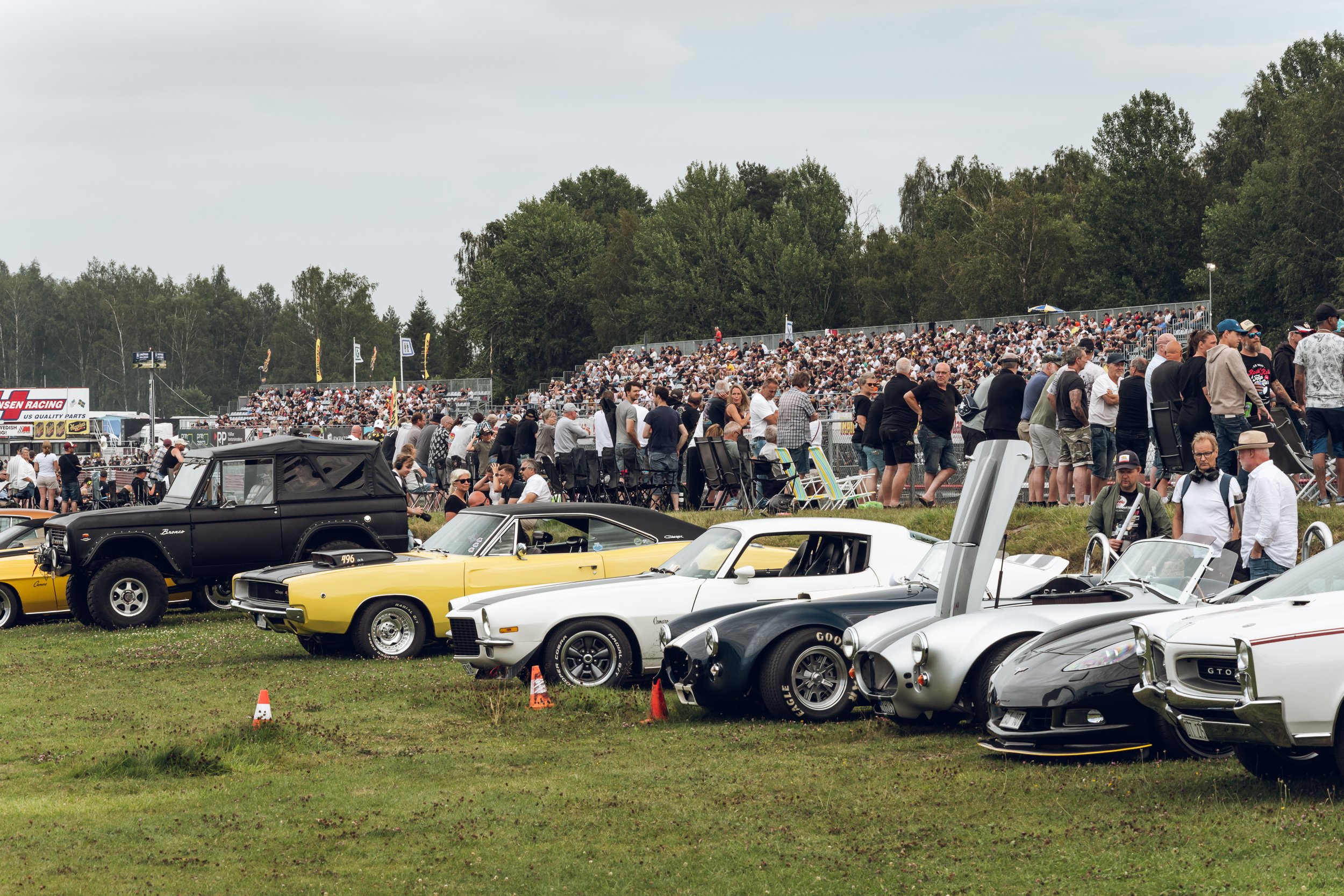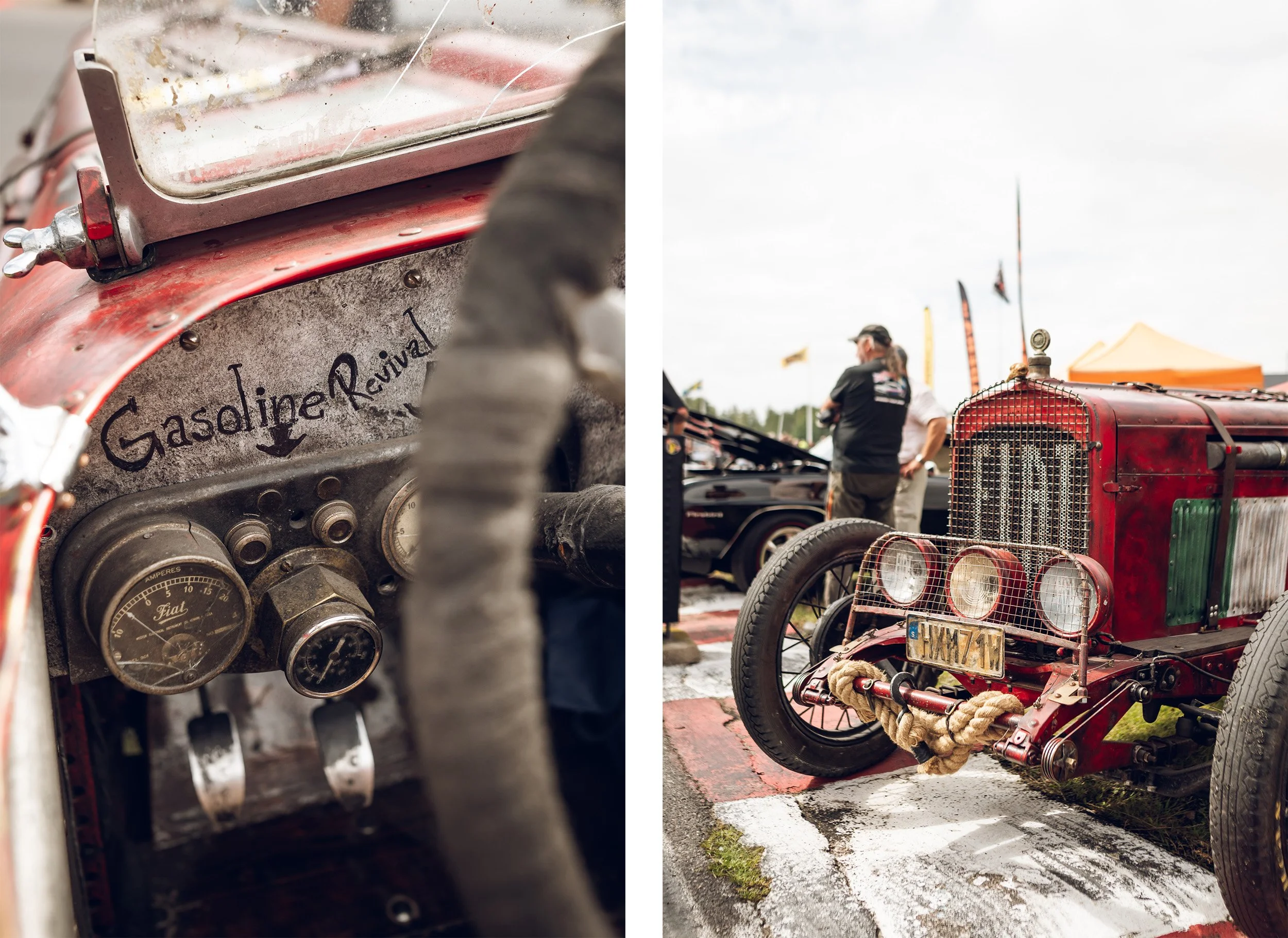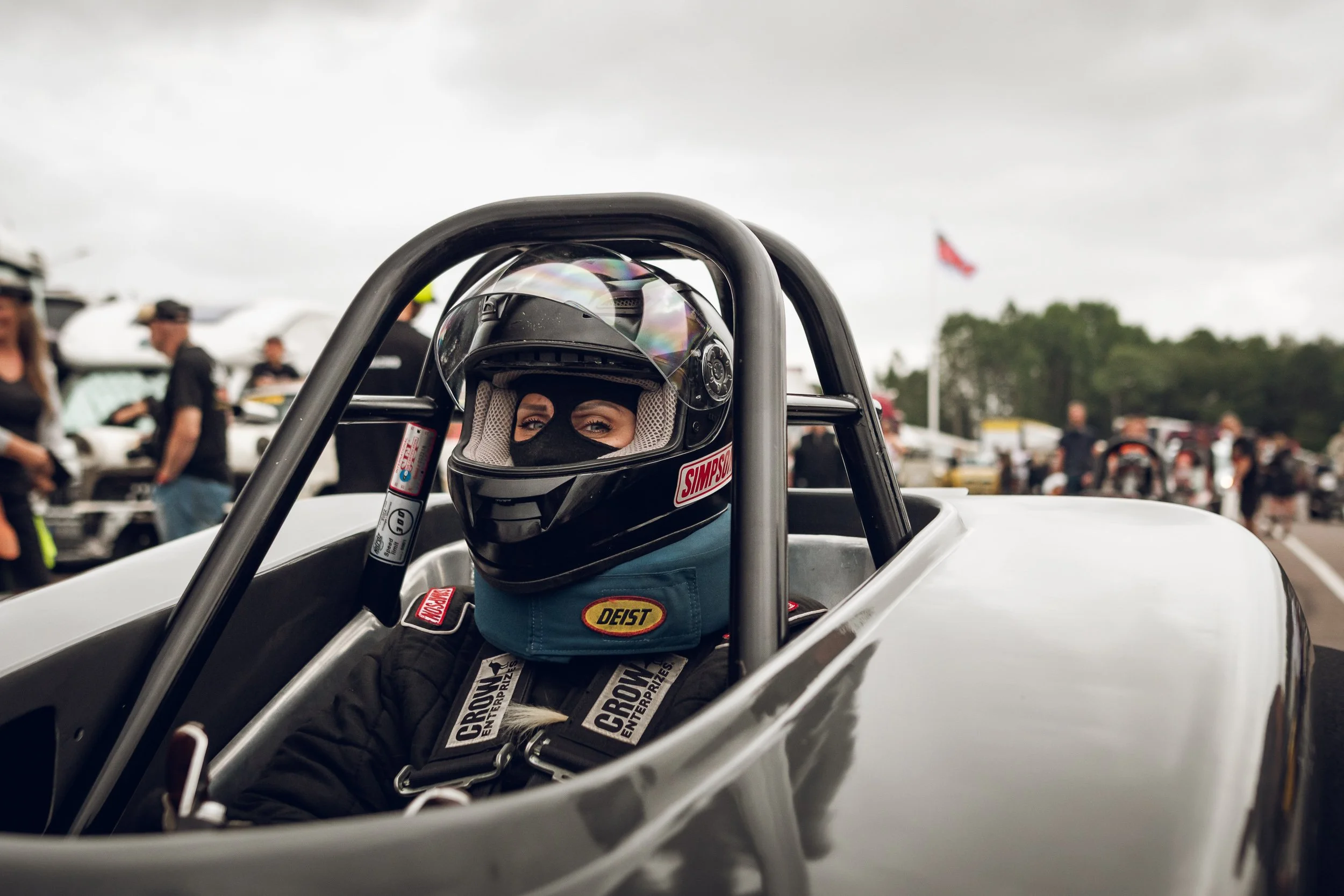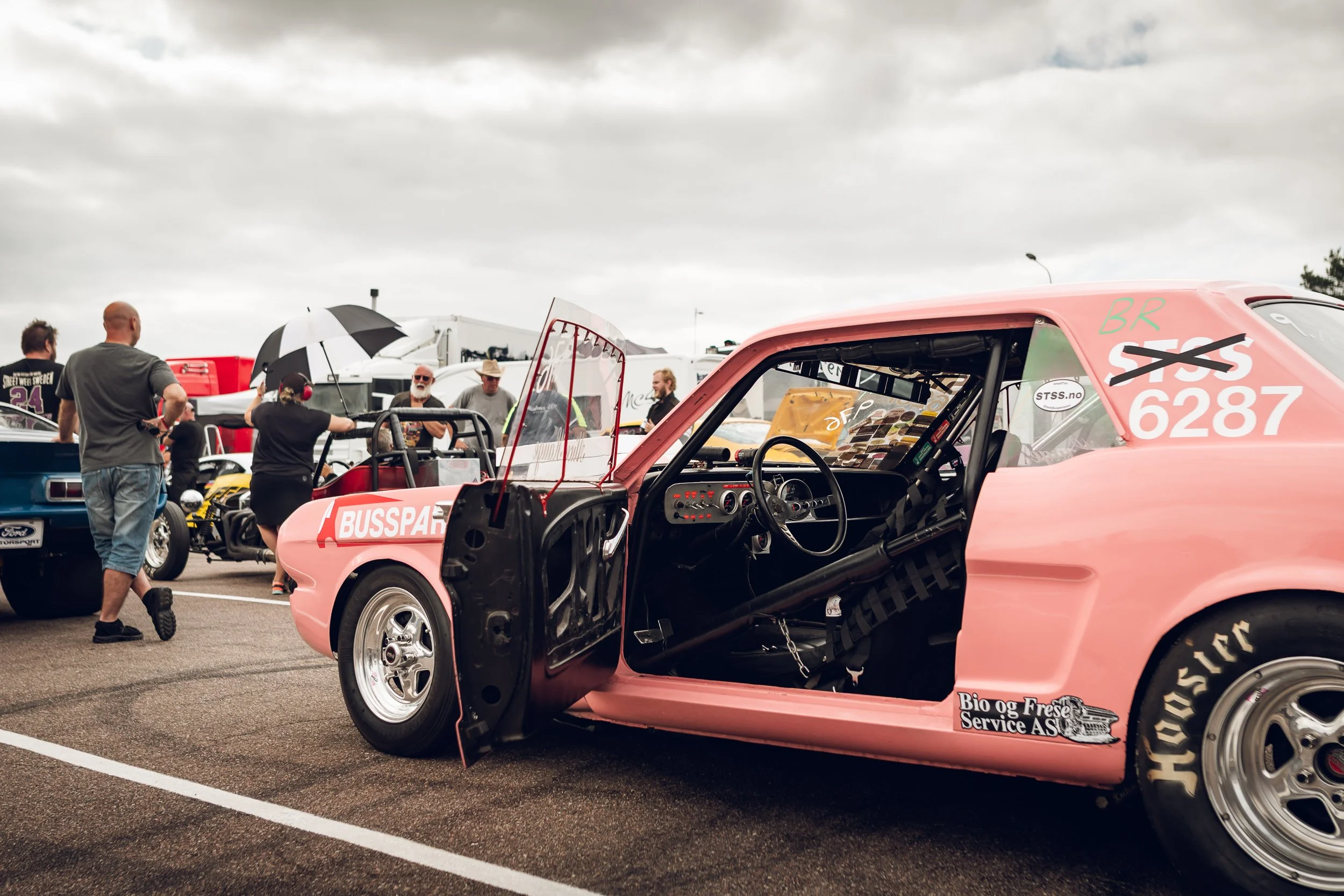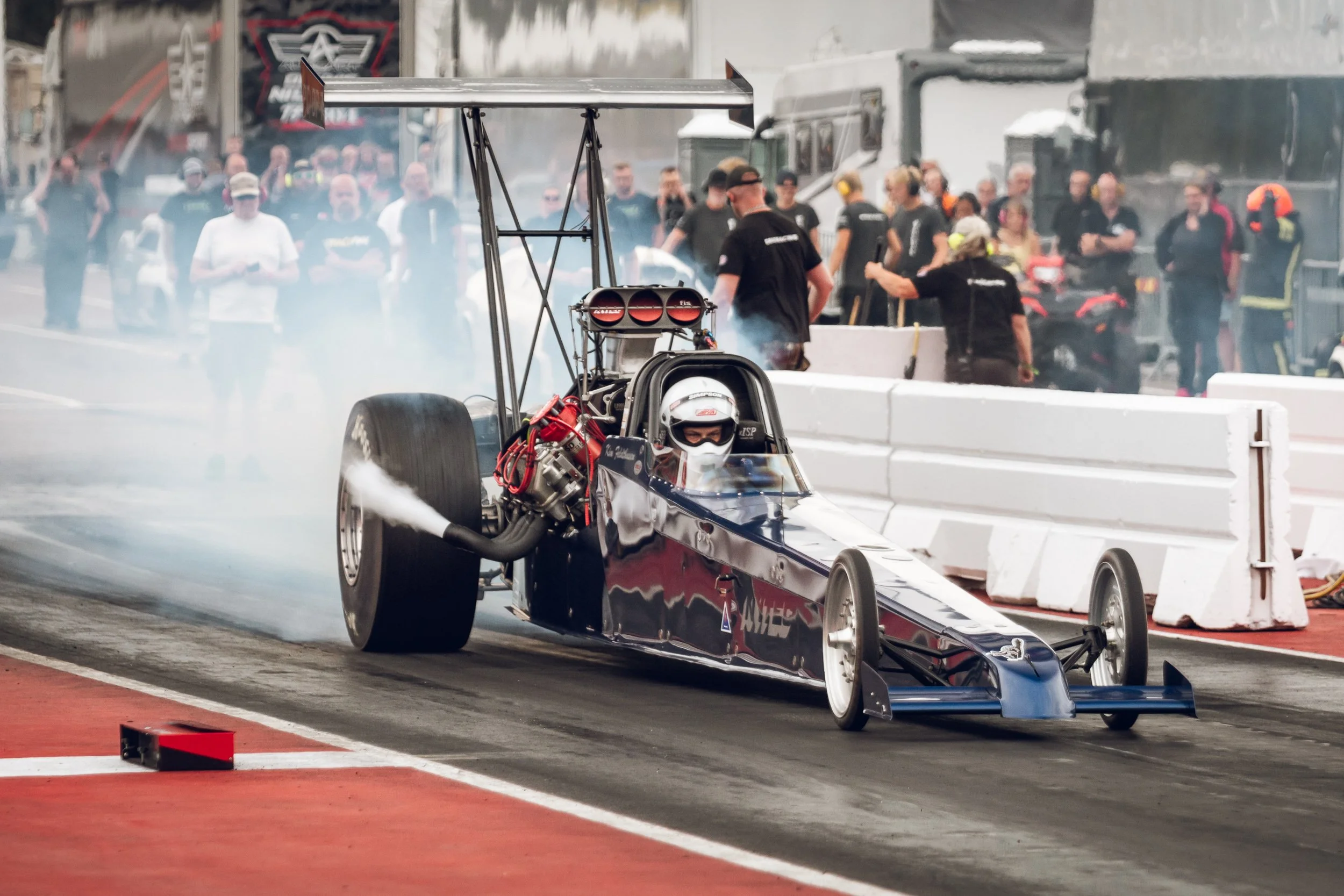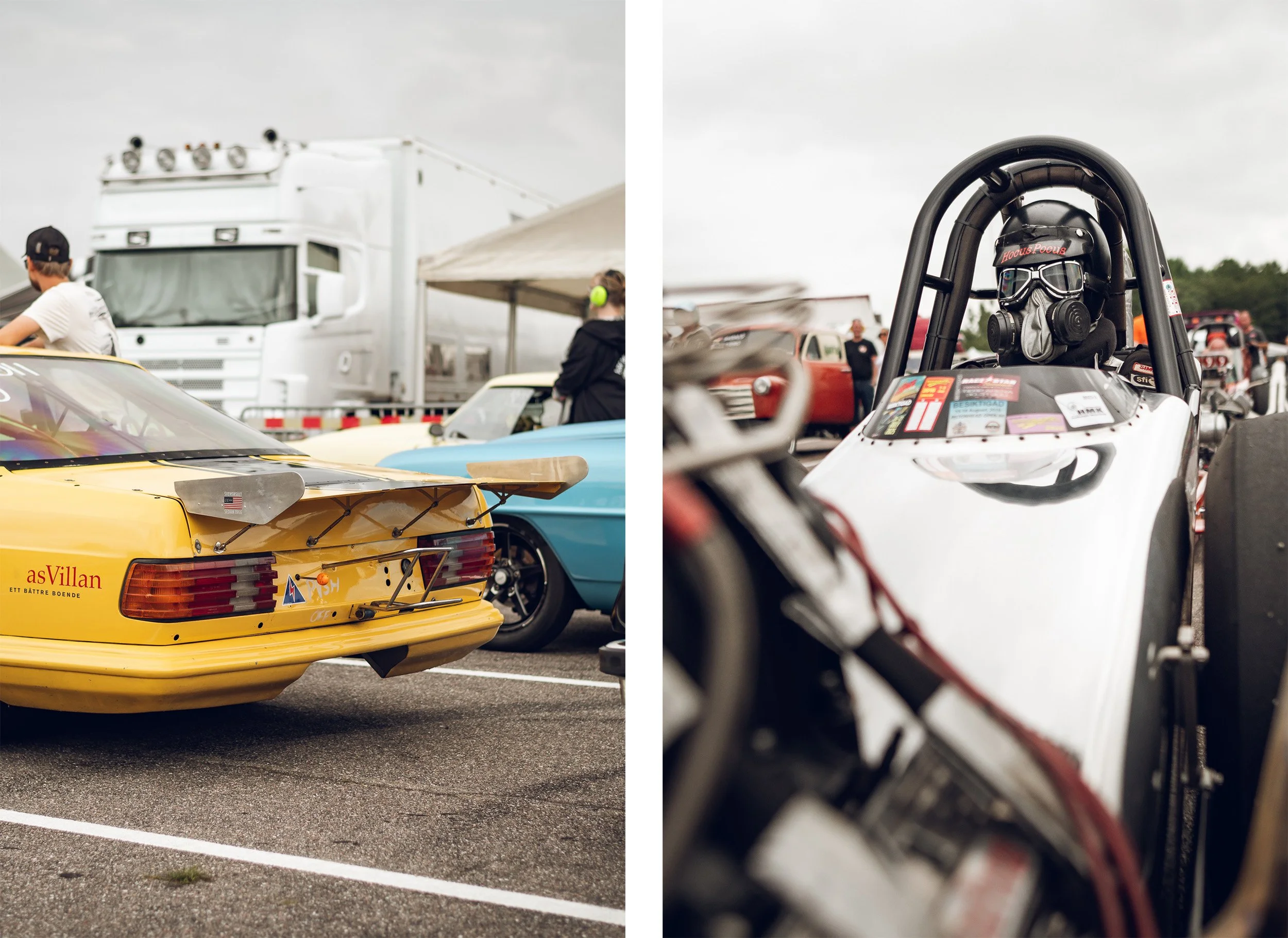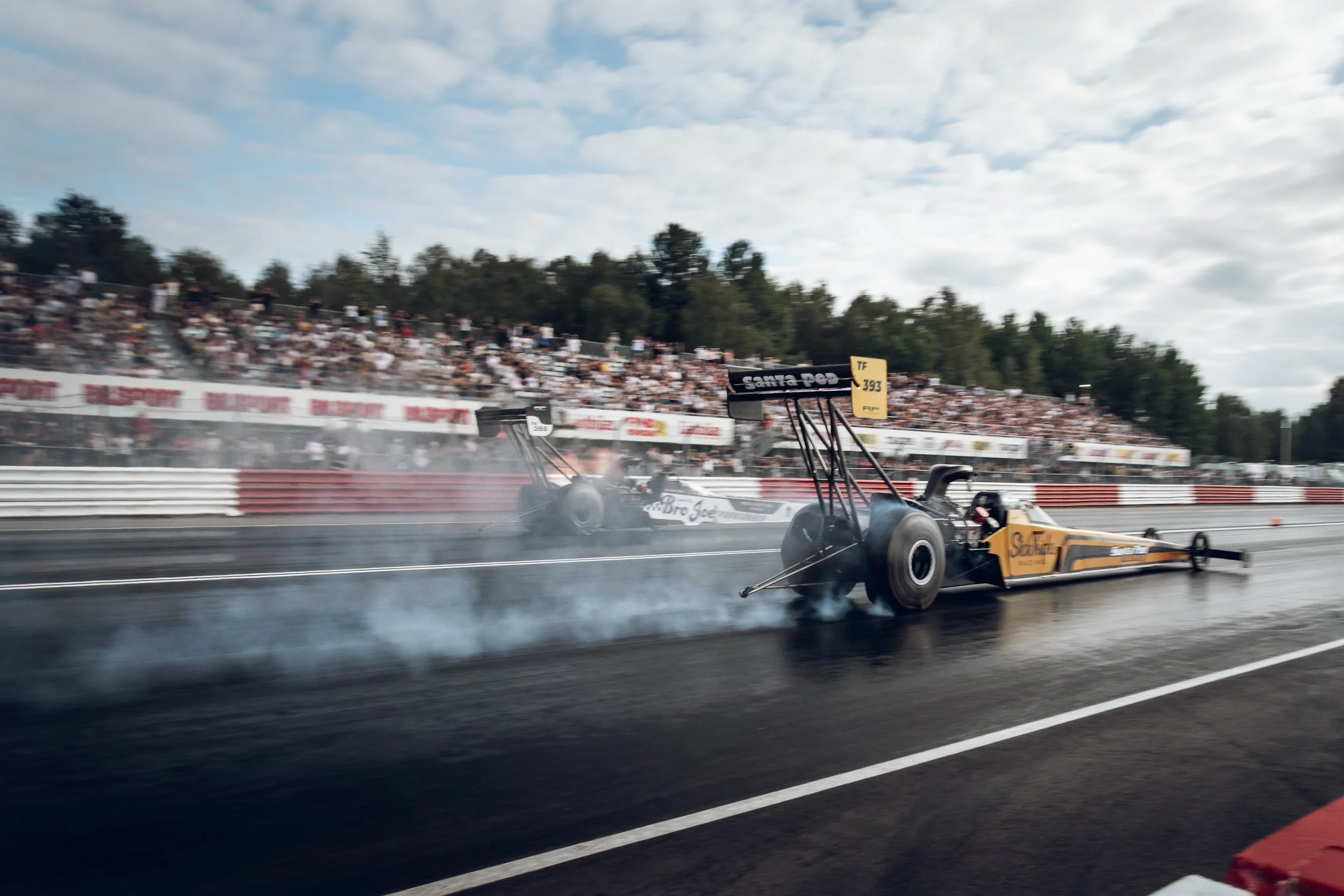Meguiar’s Drag Festival 2025
When I first went to Meguiar’s Drag Festival, I didn’t expect it to become a fixed point in my calendar. At the time, I was simply curious – what would it be like, and would I even be able to photograph such incredibly fast machines? As it turned out, this event has so much character that I now find myself returning to Mantorp Park year after year.
What I’ve always enjoyed most about Drag Festival is the variety. From small amateur teams to the most professional outfits. From classic street-legal cars through heavily modified builds, all the way to purpose-built monsters designed from the ground up. That mix is what gives this event its unique energy.
Drivers competed in 24 different classes. I won’t even try to list them all here. The vehicles lining up at the start line vary in more ways than I can count. Every time I stand by the strip, I try to guess which cars are most likely to deliver a spectacular burnout, and which might launch hard enough to lift their front wheels. I’m still learning the ins and outs of this discipline, and slowly I’m beginning to recognize cars from different classes. But I know there’s still a lot left for me to discover.
At the top of all the classes sits Top Fuel. Some say these are the fastest-accelerating land vehicles on the planet, and looking at how quickly they disappear from the stating line, it’s easy to believe this claim. With engines producing around 11,000 horsepower, they can reach nearly 500 km/h in just four seconds. No wonder the Top Fuel turn is the most anticipated moment of the weekend, with crowds gathering to witness their run.
On Friday, during the first Top Fuel run of the event, Mantorp Park witnessed a historic moment: the first ever full pass completed in under four seconds. It was Finnish driver Tommi Haapanen who made it happen, clocking an incredible 3.9888 seconds with a top speed of 488.8 km/h – securing his place in the track’s history. But he didn’t hold the title of the only “three-second” driver for long. The very next day, on Saturday, Susanne Callin joined the exclusive club with a stunning 3.9976 run.
Fate wasn’t as kind to Susanne during her next run. Traction issues led to a slower time, and despite having the second best time overall, the weekend of the Slick Tricks Racing team was cut short. According to the rules at Drag Festival, only the two drivers with the best combined results from the earlier runs qualify for the final showdown on Sunday. Unfortunately, this time Susanne didn’t make the cut.
The final was an all-Finnish showdown. Competing for the quarter-million-kronor prize were the previously mentioned Tommi Haapanen and Timo Lehtimäki. The first one came victorious.
I’ve already mentioned how impressive those fire-breathing launches are – but what interests me most is what happens back in the paddock. I don’t have any numbers to prove it, but it felt like the event had grown noticeably this year. Areas that were empty during previous editions were now filled with team service bays, and it seemed like there were more professionally prepared setups than ever before. On one hand, that’s obviously a good sign, but I also really enjoy watching the work of amateur teams. I’m not sure whether there were actually fewer of those beloved old buses converted into rolling garages this year, or if I just spent too much time by the strip.
And since we’re talking about the work going on behind the scenes, let’s return for a moment to Slick Tricks Racing team. I had the chance to take a closer look at the team’s mechanics in action and I was genuinely impressed. As soon as the dragster returned from its run, they jumped into their well-rehearsed tasks without a second of hesitation. Within minutes, the cylinder heads were off, and just moments later, new pistons and connecting rods were already being installed. I won’t go into all the details here – this deserves a dedicated article of its own.
What I really appreciate about this event is that, despite the presence of highly professional teams, big budgets, and an intense level of commitment, the atmosphere remains incredibly open. Teams are happy to show their work to spectators, and there’s always a moment to stop and have a quick chat. That kind of accessibility is rare in motorsport and it’s one of the things that keeps me coming back.
It’s a long-standing tradition that big motorsport events are accompanied by a car show for visiting enthusiasts and the one held during the Meguiar’s Drag Festival is no small gathering. As you might expect, the vast majority of cars on display, probably around 90%, were classic American cruisers. There was also a strong showing of hot rods, which, of course, comes as no surprise given the drag racing crowd. The exhibition was impressive enough that it could have easily been an event in its own right but I simply didn’t have the energy to document it properly. This time, I focused almost entirely on the main action at the strip.
One car from the spectator lot did, however, leave a lasting impression on me. The brand alone was already an unexpected sight at an event like this: Fiat! This pre-war open-wheel race car was full of charming, uncountable little details, and its patina was absolutely captivating. It looked every bit like a machine shaped by decades of spirited racing. At least, that’s the impression it gave, because despite what the registration papers say (1929), the car was actually built quite recently. It’s not even a replica of any specific model, but rather a tribute crafted by its builder in homage to the racing Fiats of that era.
This edition of the Meguiar’s Drag Festival delivered record-breaking numbers on multiple fronts. Not only was the overall track record shattered, but new bests were also set across several individual classes. Attendance reached an all-time high as well: 17,300 people came to feel the thrill, hear the roar of these incredible machines, and experience the ground-shaking vibrations as they launched down the strip.
Meguiar’s Drag Festival at Mantorp Park has earned a permanent spot in my calendar. I truly appreciate the positive spirit that defines this event. And while I’ve already mentioned many of the things that make this sport so appealing, I believe its strengths go even further: it’s close to the people, and it happens to look absolutely fantastic through the lens. This visit to Mantorp Park has definitely deepened my interest in the world of drag racing.
